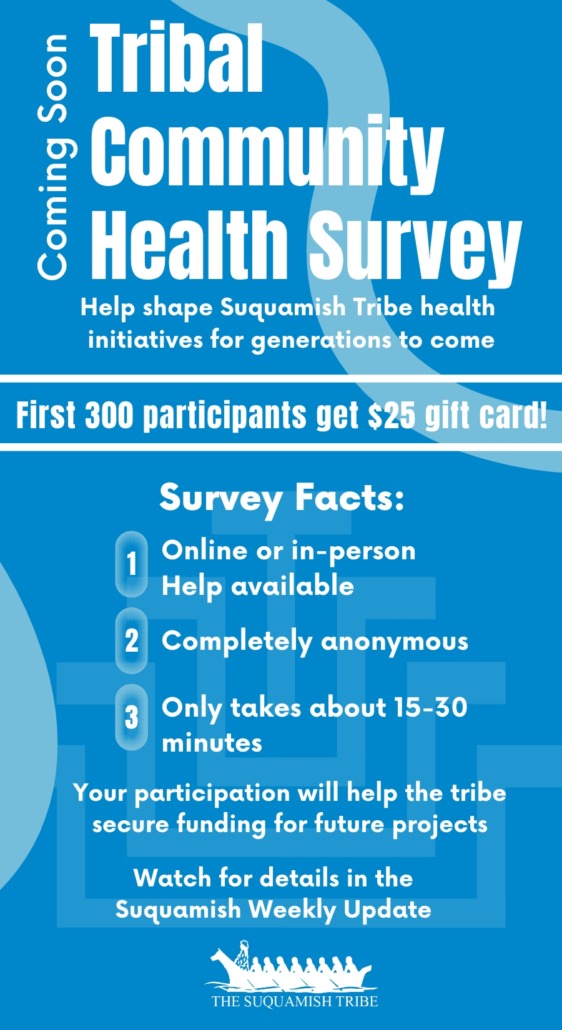Tribe launching health survey
Data will help secure funding for future generations
Many tribal members have spent time down at the Old Tribal Center with Azure Boure at the home of the Traditional Foods and Medicine Program. Many more have enjoyed the fruits of her work, a critical part of the Suquamish Tribe’s decades of focus on reawakening traditional culture.
What many may not know is how Boure’s apprenticeship with Julia Bennett-Gladstone and eventual role as a leader in the tribe’s traditional programming came to be. It all started with a humble health survey conducted in 2005.
“That simple survey was critical in helping us create not only the Traditional Foods and Medicine Program, but it also helped the tribe realize the need for the Fitness Center and expanding much of our health and social services programming over the years,” says Suquamish Community Health Manager Dr. Barbara Hoffman. “And now it’s time to do it again, so we can continue creating services that best provide what the tribal community really needs.”
In order for the Suquamish Tribe to apply for grants related to health and food sovereignty, the tribe needs to provide current information about the community.
“The best way to get that information is directly from tribal members and their families,” says Hoffman. Indeed, surveys are one the most important tools for gathering this kind of data, helping leaders collect facts on the health of the tribe and understand where assistance is needed to grow.
“This community survey is an opportunity to provide more data to the funding organizations that will provide new opportunities for the tribe. The more we come together and take part in this gathering of information, the greater our opportunities will be,” says Hoffman.
The anonymous survey, which will take 15-30 minutes for most people to complete, will contain questions about health and health-related behaviors and help leaders understand wider trends and specific needs.
There will be opportunities to take the survey at the tribe’s Computer Lab and online. For those that may have some difficulty with the interface, survey ambassadors will be available to help.
Keep an eye out for a mailer with more information, as well as SUN text alerts and the SUN Weekly Update newsletter.
“Our hope is that at least 300 tribal members will complete the survey,” says Hoffman. “The more of our people who take a few moments to complete this survey, the better we can build our programing for future generations. My hands are up to all who help us with this work.”



